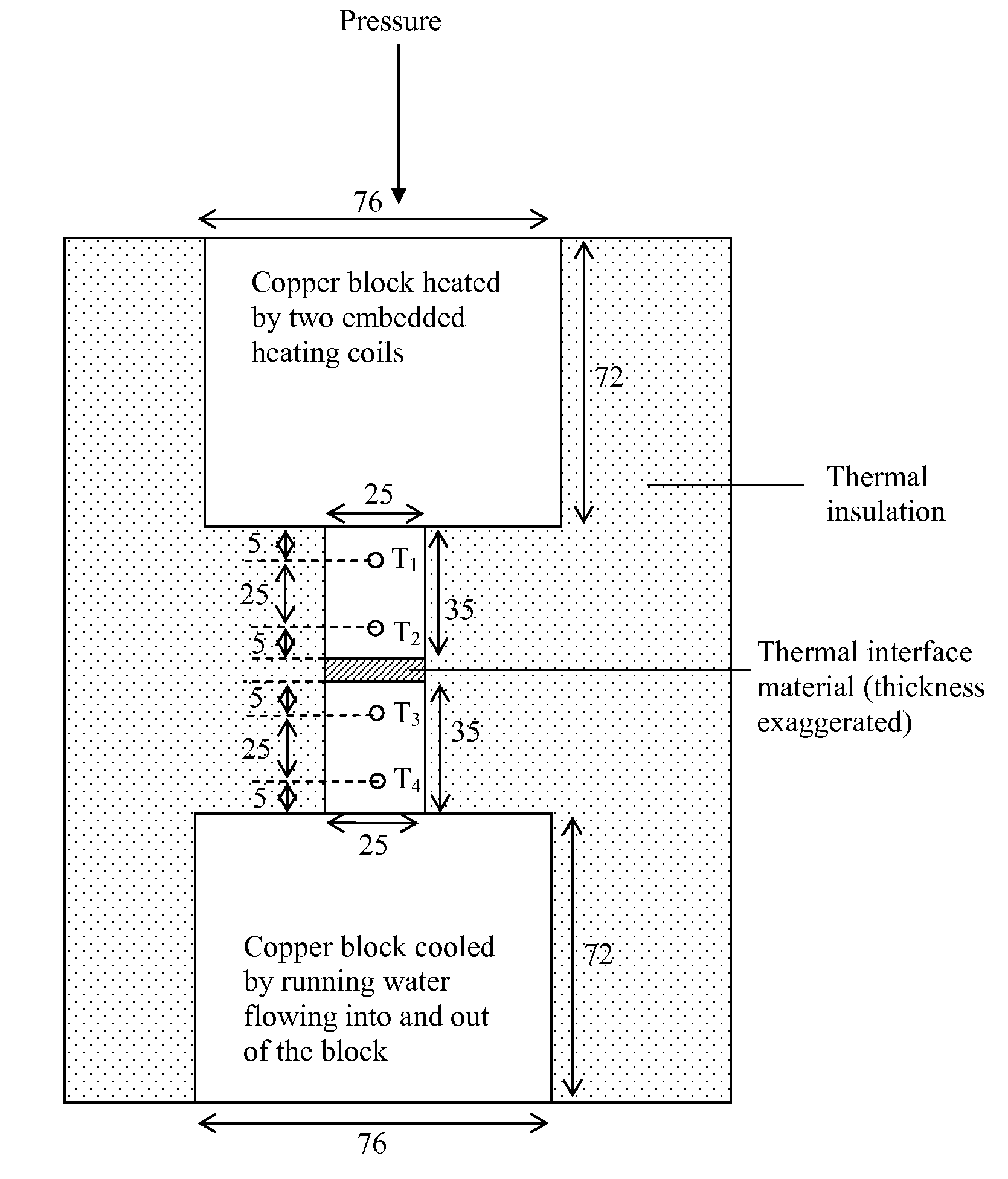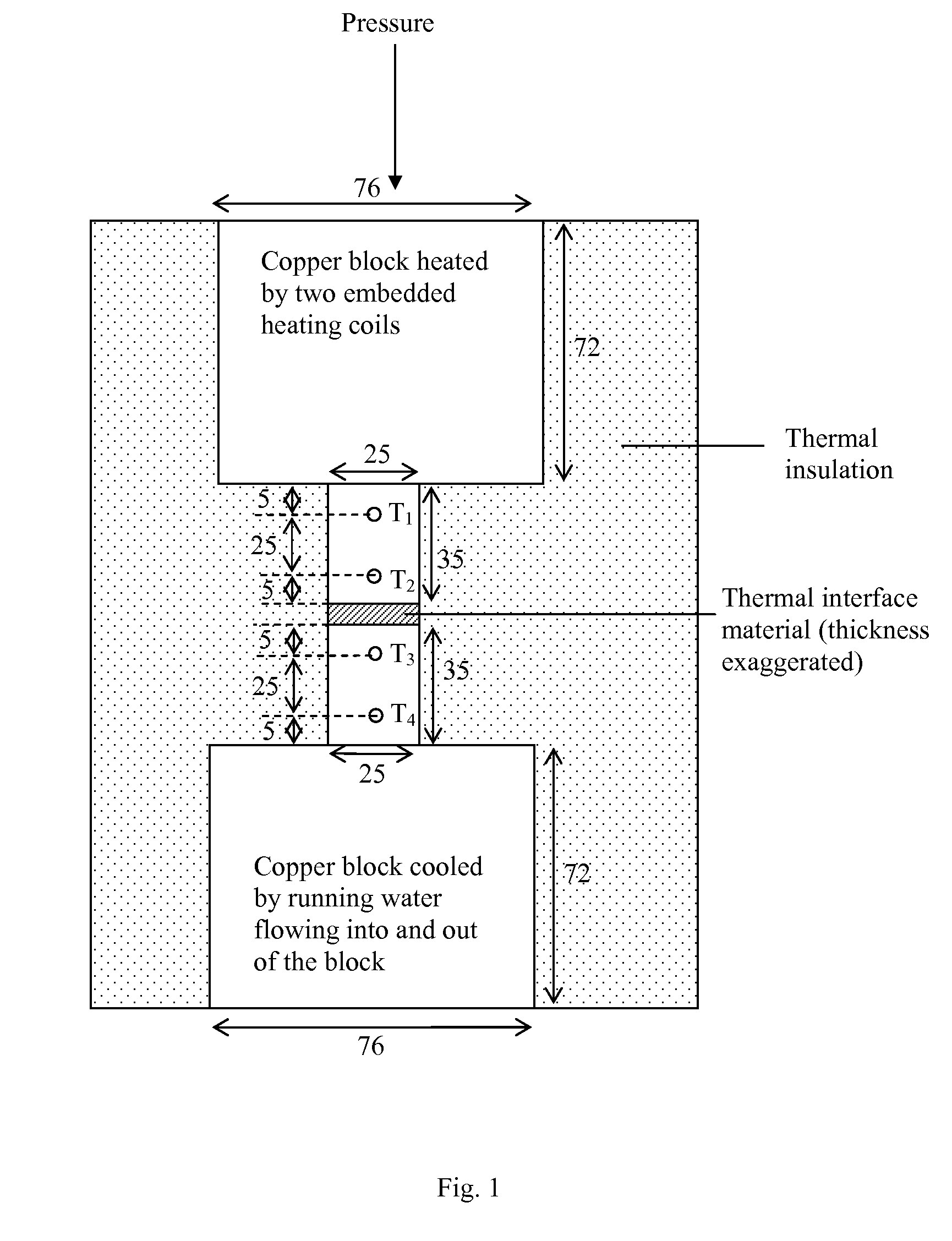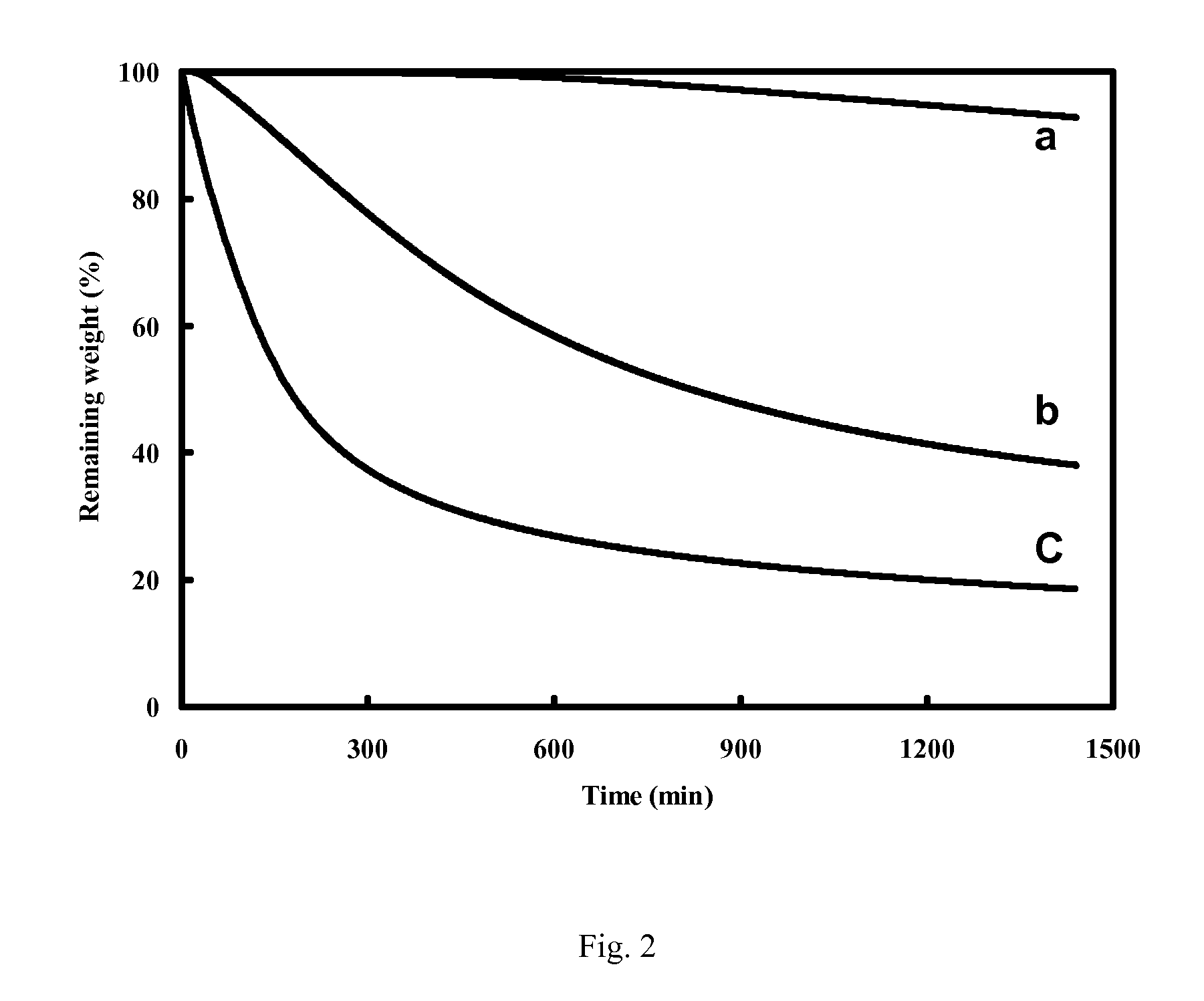Antioxidants for phase change ability and thermal stability enhancement
a technology of antioxidants and phase change, applied in the direction of heat exchange elements, chemistry apparatuses and processes, etc., can solve the problems of less effective use of primary antioxidants in the form of fully-hindered phenolics, and achieve the enhancement of thermal stability of organic liquids, low supercooling, and high heat of fusion
- Summary
- Abstract
- Description
- Claims
- Application Information
AI Technical Summary
Benefits of technology
Problems solved by technology
Method used
Image
Examples
example 1
Materials Used in Formulating Pastes with Polyol Ester as the Vehicle
[0108]The polyol esters in this work are pentaerythritol ester of linear and branched fatty acids and dipentaerythritol ester of linear and branched fatty acids. An example is dipentaerythritol hexaester. The polyol ester mixture (HATCOL 2372) is provided by Hatco Corp., Fords, N.J. The specific gravity is 0.97. Evaporation loss is 2% after heating for 6.5 hours at 204° C.
[0109]The various antioxidants used in this work are listed in Tables 1 and 2. They include primary and secondary antioxidants.
[0110]A primary antioxidant used in this work is 1,3,5-trimethyl-2,4,6-tris (3,5-di-tert-butyl-4-hydroxybenzyl)benzene. It is a fully-hindered phenolic compound and is a commercial product (ETHANOX 330, Albemarle Corp., Baton Rouge, La.) in the form of a powder with melting point 244° C. and molecular weight 775.2 amu. Another primary antioxidant used in this work is 2,2′-methylenebis(4-methyl-6-tert-butylphenol). It is a ...
example 2
Methods for Testing the Thermal Stability of the Pastes with Polyol Ester as the Vehicle
[0125]The fractional loss in mass upon heating is a description of the propensity for thermal instability. A low fractional loss in mass corresponds to a high degree of thermal stability. For measuring the fractional loss in mass, a specimen is heated for a specified amount of time at a selected temperature above room temperature and the mass loss, if any, due to the heating is noted. The temperature is held constant for the heating period, except for the initial short time taken to raise the temperature from room temperature to the selected temperature. In other words, the test is isothermal.
[0126]Two methods, both isothermal, are used for testing the extent of mass loss upon heating. One method involves heating the specimen in a thermogravimetric analyzer (TGA), which is a commercial instrument for measuring the mass of a specimen as functions of time and / or temperature. The other method involv...
example 3
Method for Testing the Viscosity of the Pastes with Polyol Ester as the Vehicle
[0137]The viscosities of thermal pastes are measured by using a rotational viscometer (Brookfield Engineering Laboratories, Inc., Middleboro, Mass., Model LVT Dial-Reading Viscometer, equipped with a Model SSA-18 / 13R small sample adaptor). The measurement is conducted at room temperature (19.8±0.5° C.) after heating at 200° C. for various lengths of time up to 48 h.
PUM
| Property | Measurement | Unit |
|---|---|---|
| melting temperature | aaaaa | aaaaa |
| temperatures | aaaaa | aaaaa |
| temperatures | aaaaa | aaaaa |
Abstract
Description
Claims
Application Information
 Login to View More
Login to View More - R&D
- Intellectual Property
- Life Sciences
- Materials
- Tech Scout
- Unparalleled Data Quality
- Higher Quality Content
- 60% Fewer Hallucinations
Browse by: Latest US Patents, China's latest patents, Technical Efficacy Thesaurus, Application Domain, Technology Topic, Popular Technical Reports.
© 2025 PatSnap. All rights reserved.Legal|Privacy policy|Modern Slavery Act Transparency Statement|Sitemap|About US| Contact US: help@patsnap.com



